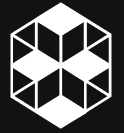If you are planning to get an Artificial grass but are confused with its specifications and want to know which kind of artificial grass would best suit your purpose, this is the right blog to give a read. Here are a few characteristics of artificial grass that one should always consider to understand which kind of artificial grass would be best for them in the best budget.
1. Pile Height
Pile height is the length of the tufts measured from the top surface of primary backing to their tips; usually, these are measured in millimeters (mm). For accurate measurement, pile tufts should be gently extended but not stretched. The kind of pile height to be chosen depends on the type of usage and on personal preference. If you prefer the look of freshly cut grass, anything between 25-30mm is a good choice. For a natural-looking lawn, something between 30-38mm is great. Anything longer than this, and the fibers tend to lie flat under their own weight rather than standing upright. Now let’s learn about a few different types of pile height.
a. Short

Going shorter than 30mm will not give a very natural look. However, this is an excellent option for people with a pet. A shorter pile for a yard dedicated to dogs is easier on their paws and is still durable enough to stand up to their activity. Also, a shorter pile is excellent for setting up a putting green at your home, helping you to perfect your putt(golf hit) without ever leaving the comfort of your house.
b. Medium

Most artificial grass will have a height between 30mm and 37mm, ensuring enough height for the pile to create a full, natural look without being heavy so it can stand up on its own and doesn’t get matted. For a multi-use backyard, anything between 30mm and 37mm is a safe purchase.
c. Long

Artificial grass with a pile height greater than 37mm can become heavy and look very flat. While most people associate a nice entire lawn with longer piles, ones that are too long will look very unnatural. The heavier the blade of artificial grass is, the more likely it will become too heavy to stand straight upright and will lay down.
2. Dtex
Dtex is short for Decitex; it is a unit to measure the amount of grass fiber. It represents grams per 10,000 meters of grass yarn. It is the count grading for filament and spinning yarns recognized by all international bodies in the man-made fibers industry.
Dtex is a significant factor affecting the face weight of synthetic grass and ensures that the grass you choose will withstand the required level of use. Generally, the higher the face weight, the more the material and the higher the price. Especially for sports turf, Dtex is crucial.
For example, for football or rugby games and regular club training fields, grass with high Dtex value provides excellent sports performance and has a longer warranty, making it a worthwhile investment. Dtex in artificial grass is divided into 6600Dtex, 8800Dtex, 9700Dtex, 12000Dtex, 15000Dtex, etc. Typically, a football field uses more than 8,800 dtex.
3. Pile Density

Pile Density is also called stitch count, or the number of blades per square inch/meter. A denser stitch count implies a higher-quality turf that is more durable and provides a more realistic artificial grass lawn.
Density = Dtex Stitch
4. Face Weight
Face weight refers to how many grams of material per square yard a type of turf has however, it does not include the weight of the backing material. The heavier the face weight, the better quality and more durable the artificial grass is.
5. Guage
The distance between two lines of stitched artificial grass is called gauge; It affects the overall look and feel. It’s commonly measured in ‘inch,’ and the common gauge includes 5/32 inch, 5/16 inch, 3/16 inch, 3/8 inch, 3/4 inch, etc.
6. Stitch Rate

Stitch rate is the number of stitches per 10cm in the stitch line direction. The gauge of a machine does not change, but the stitch rate can. The higher the stitch rate, the denser the grass.
7. Thatch
Thatch is an additional fiber with varying color, weight, and texture that mimics the inconsistencies of natural grass. It often includes brown fibers that replicate the drying underlayer of grass beneath the vibrant green, growing ones. A product with thatch can get you to the closest look to a natural lawn.
8. Backing

A backing keeps the turf together, ensures that enough air can permeate through it, and makes it easy for layers of turf to be transported and laid across different surfaces. It has two parts: primary backing and secondary backing. Both the backings work together to provide dimensional stability to the entire system and make up the back weight. A high-quality turf product can have a back weight above 740 gm. A decent back weight is a must for heavy traffic areas.
a. Primary Backing
It is composed of woven polypropylene fabrics that allow the artificial grass fibers to be tufted into the material in rows and facilitate seaming between artificial grass panels. It’s the durable material that the grass blades are stitched to. A good backing will resist stretching.
b. Secondary Backing
It is often referred to as the ‘coating’ and is applied to the reverse side of the primary backing to lock the tufted fibers permanently in place.
9. Colour

Just as natural grass comes in various colors, so does fake grass. High-quality artificial grass includes several colors to mirror the look of natural grass.
So these are the nine specifications that you can take care of before buying the perfect artificial grass for you.






